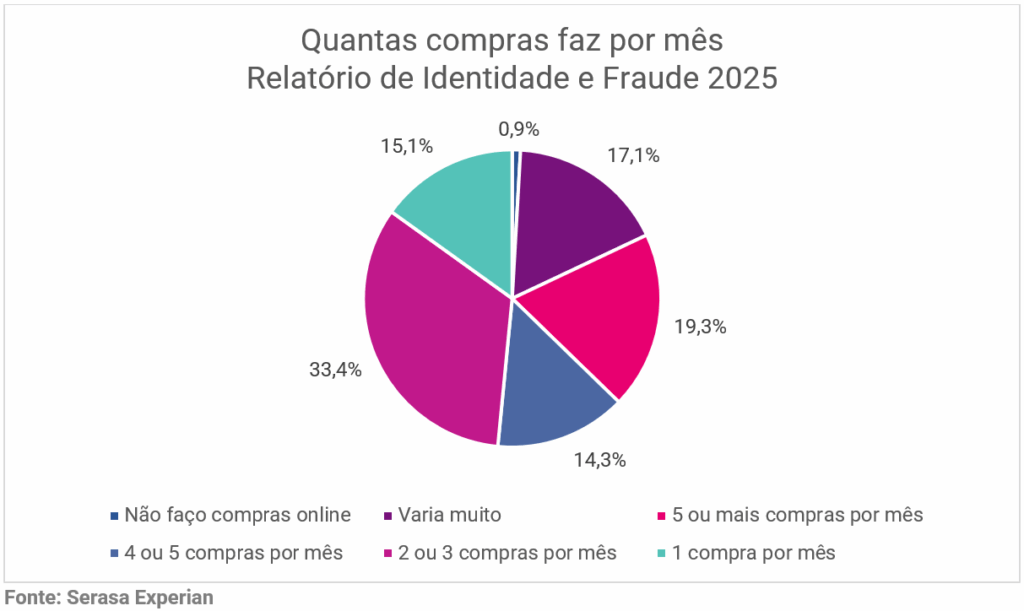E-commerce has already become part of most Brazilians’ routines: according to Serasa Experian’s 2025 Identity and Fraud Report, 82% of consumers say they make at least one online purchase per month. This data reinforces the consolidation of digital channels as a consumption habit in the country, even outside promotional periods. However, the scenario requires attention to security: nearly half of respondents (48.1%) have abandoned an order due to distrust in the website or app.
Although occasions like Mother’s Day, Black Friday, and Christmas drive seasonal sales peaks, the study shows that digital consumption is continuous behavior, not restricted to special events. ‘The high recurrence of online purchases requires companies to be prepared to protect their customers at every stage of the journey, not just during major retail events,’ emphasizes Caio Rocha, Director of Authentication and Fraud Prevention at Serasa Experian. ‘Our antifraud solutions are designed precisely to balance security and experience, supporting both consumers and businesses in building a more trustworthy digital environment,’ he adds.
Women and Class A lead in digital consumption
The survey also reveals who the protagonists of digital commerce are: women lead consumption in virtually all categories, especially clothing, electronics, and beauty or wellness products (66.3%, compared to 52.9% of men). They also buy and sell more items online (60.1% vs. 53.2%) and place more food orders (52.7% vs. 43.1%). Among men, leadership appears in only three areas: sports betting, online gaming, and credit card applications.
From a socioeconomic perspective, Class A accounts for the highest volume of digital activities, with a significant advantage in categories like grocery orders (34%) and consumption of books and music (36.1%). Although Class C still represents a smaller share, it is beginning to show growth in some areas, such as reading and entertainment, with an increase of nearly 10 percentage points in this category.
See below a table with the main online activities mapped by the research:

Online consumption remains strong, but insecurity is still a barrier for e-commerce
Even outside holiday periods, the digital habit is consolidated: 33.4% of consumers report making between two and three online purchases per month. However, convenience comes with challenges. Nearly half of consumers (48.1%) have abandoned a purchase due to lack of trust in the website or app—a factor second only to expensive shipping (75.6%) as the main reason for abandonment.
This behavior reveals a dilemma for online commerce: the growth in consumption comes alongside the expansion of fraud. With increased traffic during occasions like Mother’s Day, digital criminals intensify their actions, employing fake promotions, data theft through social media, and fraudulent websites.
‘For consumers, it’s essential to check store reputations, be wary of offers that seem too good to be true, avoid clicking on suspicious links, and register Pix keys only through banks’ official channels,’ advises Rocha. ‘The Identity and Fraud Report shows that 51% of consumers have already been victims of fraud, which reinforces the importance of multiple layers of identity verification to combat this insecurity. By combining biometrics, device intelligence, and registration validation at different stages of the journey, we can enhance security and strengthen trust in the digital environment,’ he adds.
See below the charts with data on Brazilians’ monthly purchase frequency and the main reasons for purchase abandonment:




